What Animals Ar Realted To Phorusrhacos Titanis
Phorusrhacos – a 'terror bird'
The owner of the nickname 'terror bird' and one of the biggest carnivorous birds of all times. Its nickname is thank you to i.e. extremely molded wings equipped with claws.
Although it cannot fly, the nature adapted it to living on the Earth. It was non merely a capable walker but besides a scary predator whose biggest weapon was powerful and strong neb. Beneath, we nowadays the Miocene representative of land hunters – the Phorusrhacos that is 'the owner of wrinkled jaws'.
Classification
- Kingdom: Animalia
- Clade: Dinosauria
- Class: Aves
- Order: Cariamiformes
- Family: †Phorusrhacidae
- Subfamily: †Phorusrhacinae
- Genus: † Phorusrhacos
- Species: †Phorusrhacos longissimus
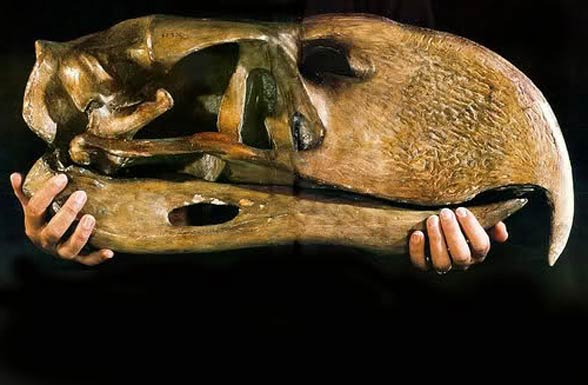
The discovery
The Argentinian paleontologist, Florentino Ameghino, discovered a slice of the jawbone in the stratum of the Santa Cruz Germination at the beginning of 1887. In the aforementioned year, Ameghino described the founding as the remainder of the toothless mammal. He suggested that mandibular sockets for blood vessels are characteristic for mammals; therefore, the wrong scientific classification. The paleontologist gave this discovery a proper name Phorusrhacos longissimus.
Phorusrhacos remains, which have been found, come from a few towns situated in the Argentinian province, Santa Cruz.
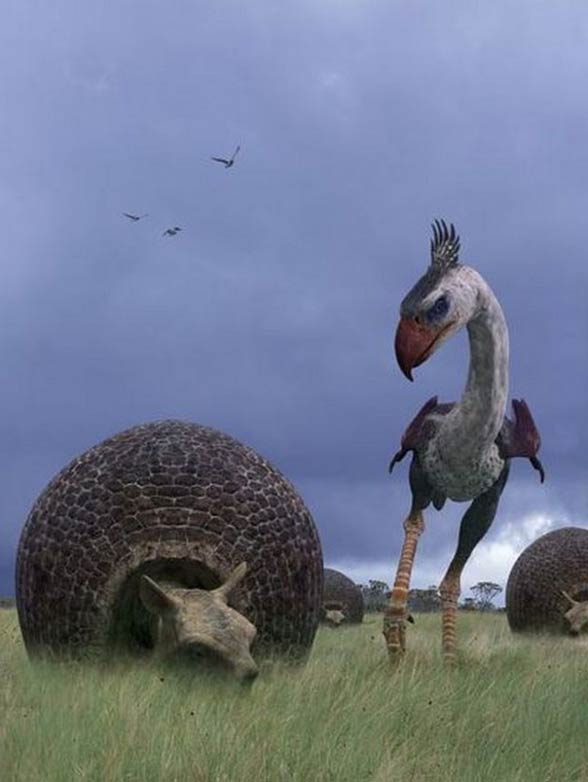
Name
The first part of the name – Phorusrhacos is derived from 2 Greek words: phoros which can be translated as 'the bearer' or 'the carrier' and rhakos which ways 'wrinkles', 'folds', 'scars'. The second part of the name probably refers to the wrinkled jaw surface although at that place are likewise other theories on this topic. The gender name – longissimus is derived from Latin and translated every bit 'very long', literally 'the longest'. This term has the connection with the size of the found jaw.
In 1889 Ameghino changed the genus name to the one, which was more grammatically right – Phororhacos. Yet, the original one Phorusrhacos has the scientific priority.
This name defined the mammal from the moment of the discovery. Information technology was merely in 1891 – 4 years afterward the discovery of the unusual jaw – that the Phorusrhacos was classified every bit the bird.
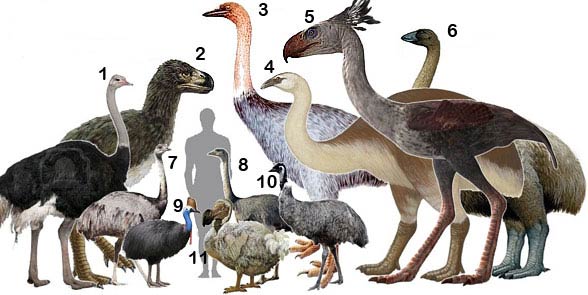
Dating
These enormous and scary flightless birds existed on the Globe around xx-25 million years ago. The Phorusrhacos order fell into the early and eye Miocene period.
Distribution
The Phorusrhacos country was present Patagonia area. Nowadays, it is not a well-populated region in South America, which is situated on the territory of Argentina and Chile.
The Phorusrhacos habitat was grasslands and woodlands.
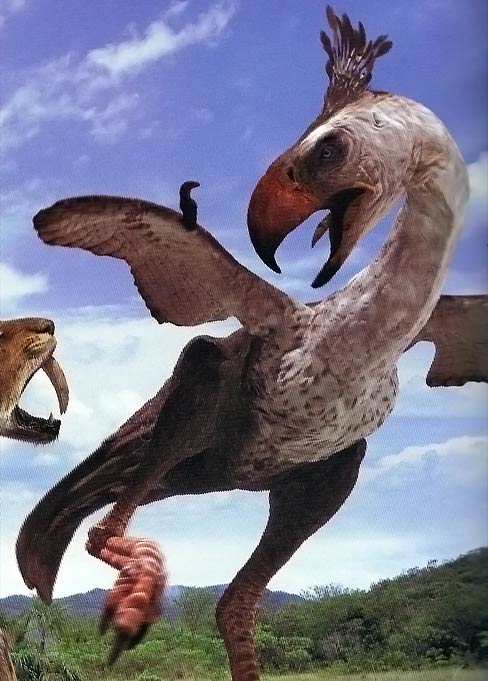
Characteristics
Appearance
Despite its big size, the Phorusrhacos was light – it was ii.v m (viii.two ft) tall and its weight was around 130kg (290 lb). Its general congenital was similar to present flightless birds. Similarly to them, it had clearly reduced wings.
The Phorusrhacos characteristic feature was sharp claw-tipped claws on not big wings. It also had huge claws on its toes cheers to which it caught hunted animals.
The main function of claws on its feet and wings was catching the prey. Flightless birds are normally presented as the ones, which hunted for small and medium animals, which could be difficult to be caught with the claw of the upper limb. It cannot be excluded that the bird helped itself using untypical claws while eating and not hunting. The other likely feature of hooks is the adjustment to fights with other representatives of this species.
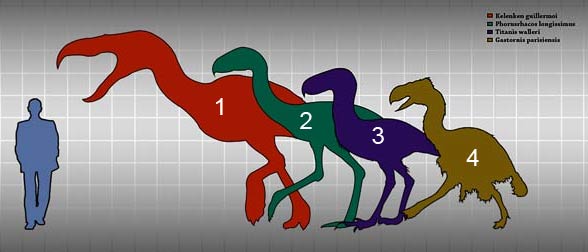
The pecker
The Phorusrhacos had a powerful claw-tipped neb characteristic for predatory birds. This part of its body could be the main weapon killing the prey. Withal, how could this flightless bird use the beak equally the mortiferous weapon? We have 2 theories for that:
- The first theory is based on observations of currently living South American seriemas birds – the closest Phorusrhacos Nowadays seriemas catch the prey using its pecker and and then, they hit it on the footing. The outcome is not simply knocking it out or killing simply also numerous breaks. Thanks to this, the predator finds it easier to swallow the hunted food. Seriema's claws are likewise used to portion the meat out. Many paleontologists support the theory that the Phorusrhacos used to hunt and kill their preys in a similar way.
- According to the second theory, the Phorusrhacos killed by precise hits in crucial torso parts using its beak, mainly the skull. This function of the beak is indicated past the hooked curve. The bird would use it then equally a pickax, with which it attacks the prey from the above. The powerful beak combined with its hit would cause the skull pause and the brain injury that would result in a quick decease of the hunted animal.
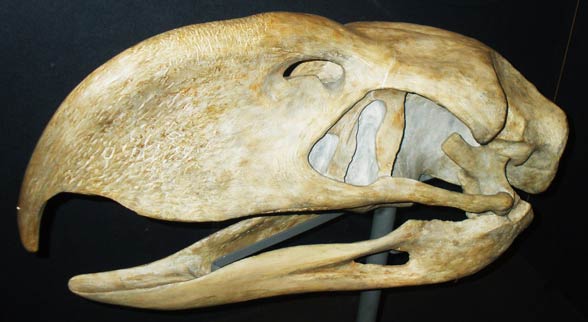
The diet and the hunting tactics
Although it had the impressive size, it hunted for small insects and mammals. Bigger animals were left for its heavier relatives such as Brontornis.
Weak and pocket-sized wings did non help it hunting; this function was taken over by its long and potent legs. It could easily chase for its potential prey on open and vast areas. It would have no difficulty in catching up relatively fast and not big animals.
However, it is possible that during hunting, the Phorusrhacos stood close to bushes and thin copse to become similar to the harmless tree trunk. Such predator became unnoticed past small mammals. When the prey came close enough, the bird jumped out in front of it and gave it no time for reaction. When it defenseless the prey, it tore it off with its claws to have better access to meat. It cannot be denied that the Phorusrhacos as well ate carcass.
Probably, that flightless bird did not accept to run a lot after its preys. It could act more than efficiently by surprise.

Detailed data / size
The Phorusrhacos
- Trunk height from the bottom to the top of its head: upward to virtually two.5 m (viii.2 ft)
- the dorsum was at the height of about 140 cm (4ft 7in)
- Weight: 130kg (290 lb)
- Speed: around 50km/h (31 mph), slower than an ostrich
- Dating: 20-13 million years ago
- Era: early Miocene – centre Miocene
- Distribution: South America, Patagonia
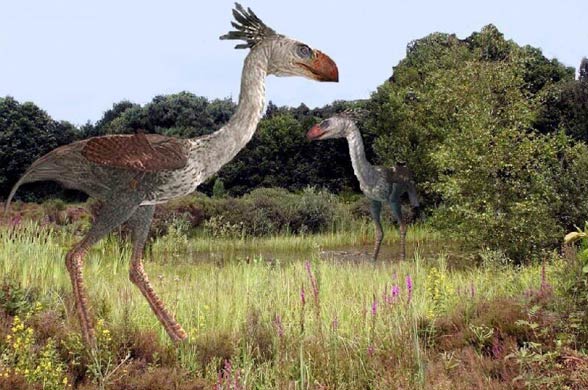
The Phorusrhacos – interesting facts
- The Phorusrhacos skull could be upwards to 60cm long.
- Shut Phorusrhacos relatives were also considered to be one of the biggest predatory birds of all times: Titanis walleri (North America), Kelenken guillermoi and mentioned in the commodity, Brontornis (Brontornis burmeisteri) lived in S America, just every bit the Phorusrhacos. Kelenken was the biggest predatory bird- it had the biggest skull of all birds and its height was over 3m.
- According to one scientific theory, grand predatory birds coexisted with last dinosaurs during the cretaceous period and hunted for them contributing to the full extinction of the cretaceous salamanders.
- In the film ten.000 BC, at that place are Phorusrhacos, side by side to mammoths and the saber-toothed cat (smilodon), in the scene presenting hunting for the main character.
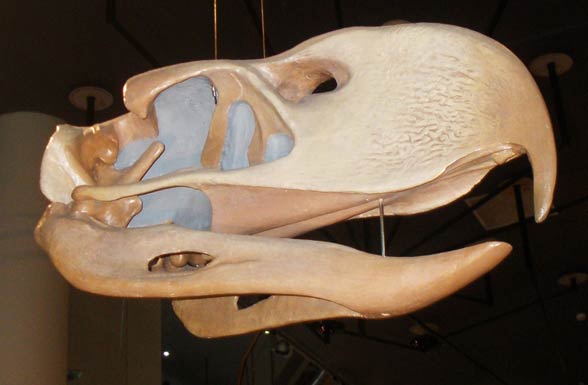
Recommended
- Extinct animals
- Elephant birds
- Moa
- Largest birds

Source: https://dinoanimals.com/animals/phorusrhacos-a-scary-bird/
Posted by: haassobsell.blogspot.com

0 Response to "What Animals Ar Realted To Phorusrhacos Titanis"
Post a Comment